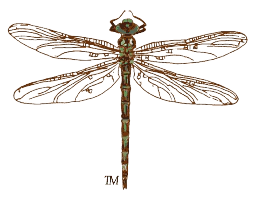The City Nature Challenge Wrap-up
Carolyn Langlinais
Texas Shines in the 2025 City Nature Challenge
The City Nature Challenge 2025 was a resounding success, with Texas making a significant impact on the global stage. This year, 14 metropolitan areas across the state participated, contributing to a staggering 342,913 observations and documenting over 9,800 species. Among these, more than 150 species were identified as being of greatest conservation need, including the Texas horned lizard, Cascade Caverns salamander, cave myotis, and Texas tortoise.
Texas Leads the Way
Texas cities ranked among the top 10 globally in several categories. The San Antonio Metro Area secured second place worldwide in both total observations and species recorded, while Dallas/Fort Worth ranked fourth in observations and sixth in species diversity. Texas alone accounted for 10% of all global observations, highlighting the state’s commitment to biodiversity and conservation.
Within the state, Texas metropolitan areas vie for bragging rights in the categories of most observations, most species, and most observers. Hays County data are aggregated into the greater Austin area statistics. Though greater Austin placed fourth in observations and species, it placed third in the number of observers.
Table courtesy Carolyn Langlinais
A Global Effort
The City Nature Challenge (CNC) is a worldwide community science initiative, inviting citizen scientists to document local wildlife using the iNaturalist app. This year’s event saw participation from 669 cities across 62 countries, with a total of 3,310,131 observations and 73,765 species recorded, including 3,338 rare, endangered, or threatened species.
Texas Master Naturalist Makes iNaturalist History
Announced on the global results flyer under Featured observations from around the world, Sam Kieschnick was recognized for making the very first observation of a Texas micropirate (Townsendia pulcherrima), a tiny robberfly. Sam is a Texas Parks and Wildlife Department (TPWD) Urban Wildlife Biologist, Texas Master Naturalist (TMN), and TPWD advisor to the North Texas Texas Master Naturalist Chapter (Dallas, Rockwall, and Kaufman Counties) whose iNaturalist name is Sambiology. You may recognize Sam from the mothing events he hosts every year at the TMN annual meeting.
Texas micropirate (Townsendia pulcherrima)
Photo Sam Kieschnick, iNaturalist observation: https://www.inaturalist.org/observations/273387840.
Accessed on June 29, 2025.
Hays County Master Naturalists Contribute Observations/Identifications
Organizers for the 2025 Austin area CNC attended a presentation by the San Antonio organizers who listed the ways they garnered interest in participation and subsequently made it to 2nd place globally for the CNC in 2024. One of those activities was to create small competitions. Hence, the Hays County Community Competition was formed.
Blake Hendon, TPWD Wildlife Biologist and HCMN Advisor, created these community teams, which we anticipate will become a source of friendly competition and bragging rights in the years to come. This year, congratulations goes to Team Buda for blowing past the other teams in number of observations and species observed.
San Antonio has introduced competitions between high schools and between colleges and universities. Teams were created to bio-blitz San Antonio-area parks during the CNC weekend. We hope to incorporate many of these ideas in Hays County during future CNC events.
This year, we partnered with Jacob’s Well for a Girl Scout hike, helped Stagecoach Park in Buda with a bio-blitz, and held a mothing event at Blue Hole.
Leaderboards for Observations, Species, and Observers can be found at: https://www.inaturalist.org/projects/city-nature-challenge-2025-hays-county-community-challenge
iNaturalist is a wealth of information, teaching us through repetition the names and habits of plants, animals, and fungi. After the CNC, we can also learn a little bit about the nature habits of our fellow master naturalists and citizen scientists. Who saw the most insects? Who loves holding the snakes they find? How many grasses were identified?
Hays County top observers can be found in the table below. Recognize any iNat names?
Not only is it important to make observations, identifying them so that they reach research grade is just as important. Research grade observations can be used to inform conservation decisions and conduct research. Many thanks to all those who participated in our identification party, which was held at Roughhouse Brewing in San Marcos on May 1, 2025. Laptops and reference books were scattered across tables as we tackled the hard work of identifying observations.
Hays County top identifiers are listed below:
Looking Ahead
With Texas continuing to be a leader in community-driven conservation, the Texas Nature Trackers (TNT) program—part of the TPWD Wildlife Conservation Program that tracks the status of wild populations of plants and animals throughout Texas—remains dedicated to supporting future challenges. “Participating in TNT projects is a great way to learn more about the biodiversity of the state and contribute to Texas Parks and Wildlife's research and conservation efforts.”
As urban expansion continues, efforts like the City Nature Challenge play a crucial role in preserving the state’s rich biodiversity.
Mark your calendars now for the 2026 CNC, taking place on April 24- 27.
For more details, visit the City Nature Challenge website.
Some sections of this document were generated with the help of Microsoft Copilot, with subsequent review and revisions by the author.






